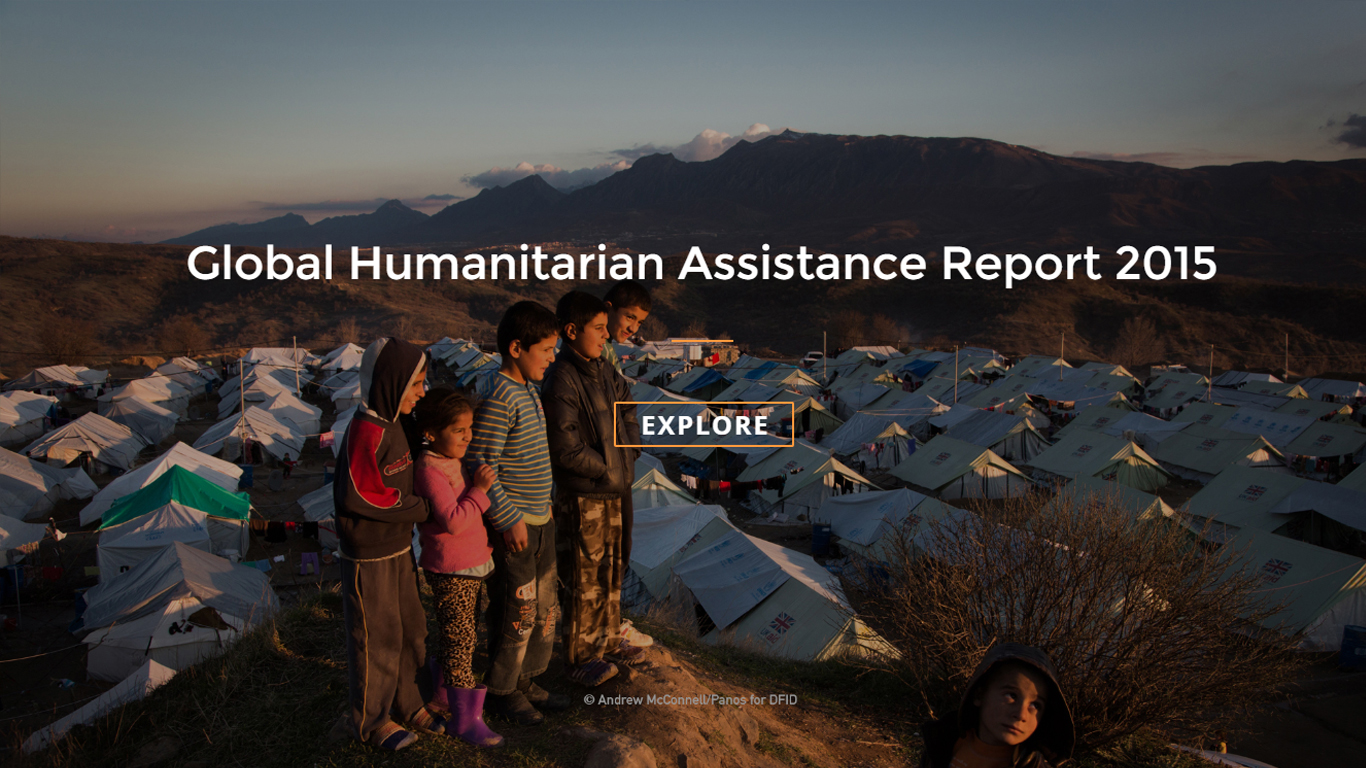Thank you to all those that participated in our event in London and online. You can view the recorded event below. Please do share with your networks.
REPORT SYNOPSIS
Humanitarian financing is in the spotlight like never before. An extraordinary combination of crises continues to test international, national and local capacity to prevent, prepare and respond as needs continue to outstrip available resources. Global processes taking place during 2015 and 2016 – including the Financing for Development process and the World Humanitarian Summit – offer important opportunities to shape global strategies and address needs across development and humanitarian spheres for years to come.
The Global Humanitarian Assistance (GHA) report 2015 shows that poverty and vulnerability to crises are intrinsically linked and that international humanitarian assistance continues to go predominantly to long-term recipients. This emphasises the need to build resilience, address the underlying causes of crisis and meet the long-term needs of people affected by crisis. For this to happen, a shared responsibility between humanitarian, development, climate change and other actors is critical as is the mobilisation of other resources beyond humanitarian assistance.
Key findings of the report include:
- International humanitarian assistance rose for a second year running to a record US$24.5 billion in 2014. All of 2013’s largest donors gave more in 2014, and many gave their largest amounts. Despite this rise, funding was not sufficient to meet needs. In response to the scale of need in 2014, UN-coordinated humanitarian appeals requested the highest amount of funding to date – a total of US$19.5 billion – yet a record US$7.5 billion of requirements went unmet.
- 2013 saw a shift in the geography of displacement – with more people displaced now in the Middle East than in Africa. As a result, Gulf donors rose in prominence, and Saudi Arabia and the United Arab Emirates (UAE) became the 6th and 15th largest government donors, respectively.
- Two thirds (66%) of international humanitarian assistance continues to go to long-term recipients such as Syria, Somalia and Pakistan, as crises are protracted or disasters recur in the same places year on year.
- An estimated 93% of people living in extreme poverty (defined as less than US$1.25 a day) are in countries that are either fragile or environmentally vulnerable or both, emphasising the need to address the underlying causes of crises.
- Domestic response and capacities often play an important role in best meeting needs and reducing the need for international finance, as case studies of Turkey and Mexico show.
- Of total international humanitarian assistance, only 0.2% went directly to local and national NGOs and 3.1% to the governments of affected states.
The report uses unique methodologies to gather and analyse data to provide the most up-to-date and comprehensive picture of global humanitarian financing. It includes in-depth analysis of international financing to national and local actors, as well as wider resource flows to the most crisis-affected, fragile and environmentally vulnerable countries.
We have produced this report annually since 2000, to present a shared and independent evidence base for anyone engaged in providing, using, receiving and understanding assistance in crisis settings. In a year when financing for crisis preparedness and response is under scrutiny as never before, our report provides the data to inform discussion, which we hope will deliver change.
All of the data contained within this report is available to download. We are always pleased to hear from you, so do share with us your feedback and ideas for how we can get better data or make it more useful. You can also join the discussion on twitter #GHA2015
DOWNLOADS
- Full report PDF
- Full report (print friendly) PDF
- Executive summary text and infographic PDF Data
- Executive summary in French PDF
- Executive summary in Arabic – PDF
- Chapter 1 – Who was affected? PDF Data
- Chapter 2 – How much was given and was it enough? PDF Data
- Chapter 3 – Where does it come from? PDF Data
- Chapter 4 – Where does it go? PDF Data
- Chapter 5 – How does it get there? PDF Data
- Chapter 6 – What is it spent on? PDF Data
- Chapter 7 – How quickly and for how long? PDF Data
- Chapter 8 – What other resources are important? PDF Data
- Chapter 9 – Better information for better response PDF Data
- Chapter 10 – Data & guides PDF Data
See the recommendations emerging from our event at ECOSOC Humanitarian Affairs Segment (HAS) 2015 ‘Interactive Dialogue on Humanitarian Financing’ which were presented to the official ECOSOC HAS High Level Panel on ‘Addressing capacity and resource challenges through humanitarian financing’ on 18 June 2015.
Correction: We have corrected an error in Figure 4.7 on page 62. This has been updated.
